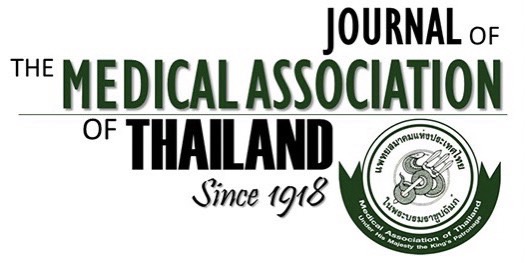The Accuracy of Pedicle Screw Placement in Thoracic Spine Using the Funnel Technique in Idiopathic Scoliosis
Wicharn Yingsakmongkol MD*, Narapong Hangsaphuk MD*, Sukalaya Lerdlam MD**
Affiliation : * Department of Orthopaedic Surgery, Faculty of Medicine, Chulalongkorn University ** Department of Radiology, Faculty of Medicine, Chulalongkorn University
Study
Design : A retrospective study of the accuracy of the pedicle screw placement in the thoracic spine using
the Funnel technique in idiopathic scoliosis was conducted by using CT-scan analysis.
Objective : To evaluate the accuracy of thoracic pedicle screw placement using the Funnel technique in the
surgical management of idiopathic scoliosis.
Background data: Placement of thoracic pedicle screw especially in idiopathic scoliosis is technically chal-
lenging. CT scan navigator is time-consuming and very expensive. Funnel technique was developed to locate
the position of the pedicle and without using the CT guided navigator. There are no reports on the accuracy
of pedicle screw instrumentation of the thoracic spine using the funnel technique in scoliosis surgery.
Materials and Methods : 117 screws in 14 patients with idiopathic scoliosis were investigated by computed
tomography. Screw positioning was analyzed based on each spinal level, side of deformities (convex or
concave side) and direction of cortical penetration.
Result: Forty-one screws (35%) were placed within the pedicle. Forty-five screws (38%) breeched the medial
cortex of pedicle and thirty-one screws (27%) breeched the lateral cortex of pedicle. The percentage of screws
totally contained within the pedicle also varied by the thoracic regions: 43% was in between T1-T4, 29% was
in between T5-T8, and 37% was in between T9-T12 level. However, there was no statistical difference between
the spinal regions and the accuracy rate. Fifty-four screws were placed on the convex side of the spine and
sixty-three screws were placed on the concave side. The percentage of totally contained within the pedicle in
the convex and the concave side were 20% and 48% respectively. It had statistical difference (p = 0.004).
Although medial perforation of the pedicle wall occurred in 38%, there were only 6.7% (3/45) of these that
had canal encroachment of more than 4 mm. All of these occurred on the convex side. 62% and 31% of screws
with medial perforation were less than 2 mm and 2.0-4.0 mm of canal intrusion respectively. Among the lateral
penetration, 42% of these screws penetrated < 2 mm., 48% penetrated 2.0-4.0 mm., and 10% penetrated more
than 4 mm. There was 3.4% (4/117 screws) that did not purchase the anterior portion of vertebral body.
Although the percentage of totally contained screws was low, there was an 82.1% acceptable rate of screw
position. These are screws that were fully contained within the pedicle plus medial perforation less than 2 mm.
plus screws that had lateral penetration but purchased into the vertebral body). No screws perforated the
anterior cortex of the vertebral body. There were no neurovascular complications.
Conclusion : Placement of the thoracic pedicle screws using the Funnel technique in idiopathic scoliosis had
an accuracy of 82.1%(screws that were in acceptable position). There were no neurovascular related-compli-
cations by using this technique in the present study.
Keywords : Accuracy, Pedicle screw, Thoracic spine, Scoliosis



